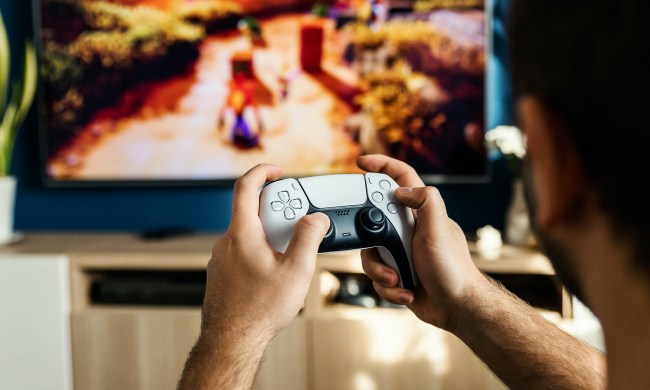The PlayStation Portal is an awesome way to take your PS5 gameplay into the handheld realm. As long as you’re rocking a Wi-Fi connection, you’ll be able to stream your favorite PlayStation titles on a bite-sized screen that delivers some very punchy visuals. But the Portal has developed a reputation for polarizing critics and users. This leaves a window for competition to flourish, and let’s just say there’s no shortage of handheld consoles on the market.
For your consideration, we’ve put together this list of our five favorite PlayStation Portal alternatives.



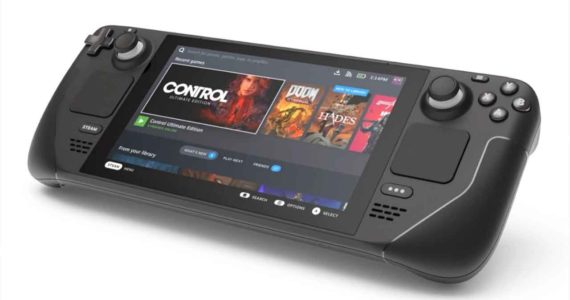

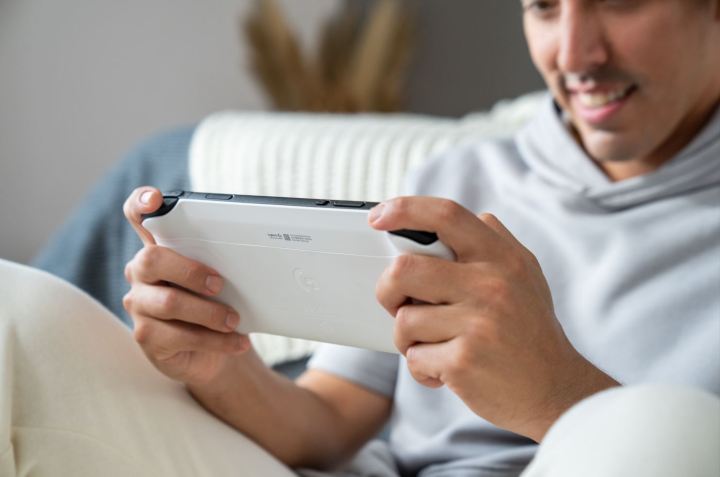
The best overall PlayStation Portal alternative
Logitech G Cloud
- Excellent battery life
- Comfortable design
- Best cloud gaming apps supported
- Plays mobile games
- No 4G or 5G
- UI issues
- Expensive for what it is
| Specifications | |
|---|---|
| Support for PS Remote Play: | Partial (Requires DualSense) |
| Wireless connection: | Wi-Fi |
| Screen size: | 7-inches (1080p) |
The Logitech G Cloud is a powerful streaming handheld, allowing you to access a variety of platforms such as GeForce Now and Xbox Cloud Gaming. You’ll also get access to PS Remote Play via the Google Play store, though you’ll need to mess with some key mapping features to get it working properly.
Most handhelds don’t even offer support for PS Remote Play, so while it’s not as flawless as PlayStation Portal, it’s great to have the option to access your PS5 through the G Cloud. Along with apps for most of the big game streaming platforms, the G Cloud lets you play standard Android mobile games, making it surprisingly versatile for its price.
Coupled with up to 12 hours of battery life, a lightweight design that clocks in at less than 500 grams, and Wi-Fi connectivity that maxes out at 800 Mbps, and you’ve got a handheld system that’s perfect for long gaming sessions. It lacks 5G and doesn’t offer as much support for PS5 as the first-party Portal, but it’s a great alternative — especially if you plan to access games beyond the PlayStation catalog.

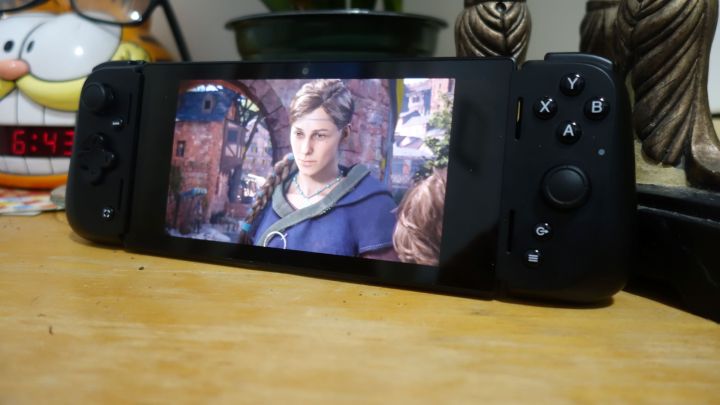
The best premium 5G gaming system
Razer Edge 5G
- Powerful specs
- Truly portable design
- Beautiful display
- 5G is ideal for cloud
- Great emulation potential
- Loud fan
- Cramped design
- Pricey considering alternatives
| Specifications | |
|---|---|
| Support for PS Remote Play: | Partial (Requires DualSense) |
| Wireless connection: | Wi-Fi or 5G |
| Screen size: | 6.8-inch (2880×1080 resolution) |
Coming from Razer, it’s no surprise that the Edge is a premium, upscale device. It’s built to support multiple game streaming platforms, including PS Remote Play — though you’ll want to pair it with a DualSense controller for complete support.
The Razer Edge is available in both Wi-Fi and 5G formats. The 5G model is the better of the two, giving you access to lightning-fast speeds regardless of where you roam. It’s expensive, but most customers will find it to be significantly more useful than its Wi-Fi counterpart. Regardless of which model you pick, you’ll have to put up with a noisy fan during intense gaming sessions.
That’s about the only knock on what’s otherwise a well-rounded product. With hardware that should stream most games with ease, a vibrant AMOLED display, and support for up to 144Hz refresh rates, it’s a premium handheld for gamers who want the best streaming experience possible.


The best affordable PlayStation Portal alternative
Backbone One Controller
- Affordable
- Portable design
- Models for both Android and iOS
- Requires a smartphone
| Specifications | |
|---|---|
| Support for PS Remote Play: | Yes |
| Wireless connection: | N/A (Connects to phone via USB or Lightning port) |
| Screen size: | N/A |
Looking for something a bit more affordable? Then you can stop your search with the Backbone One. Clocking in at around $100, the Backbone One connects to your smartphone and essentially turns it into a game-streaming device.
What makes the Backbone One so great for PS Remote Play is that its detected as a DualSense controller. This means you won’t have to mess around with additional key mapping or connecting an actual DualSense to your phone. Just connect the Backbone One, launch the Remote Play app, and you’re ready to start gaming.
You’ll find formats that support most Android and iOS devices, along with a few different color palettes. It’s not as fancy as some other PlayStation Portal alternatives — after all, it’s essentially just a mobile controller — but the fact that it’s detected as a DualSense is a massive win for PS5 fans looking to take their game on the road.

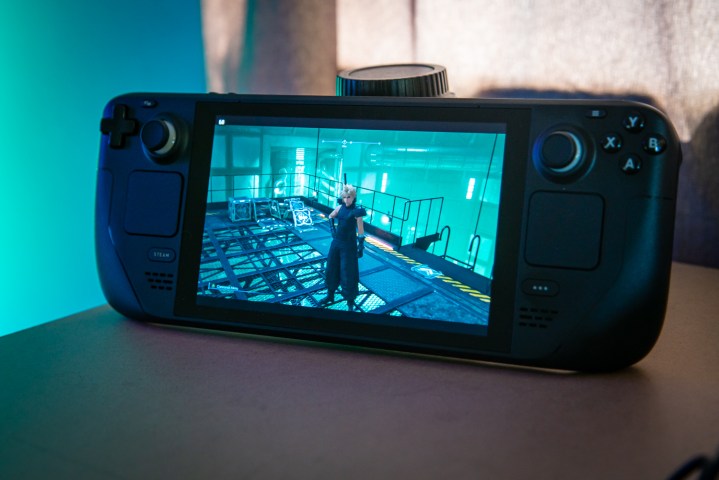
The best handheld gaming PC
Steam Deck
- Tons of control flexibility
- Excellent specs
- Fantastic speakers
- Clean Steam interface
- Constantly improving
- Awkward design
- Poor screen
- Finnicky Linux browser
| Specifications | |
|---|---|
| Support for PS Remote Play: | No |
| Wireless connection: | Wi-Fi |
| Screen size: | Up to 7.4-inches (1280×800) |
The Steam Deck won’t let you access PS Remote Play without some serious workarounds, but if you’re looking for the best handheld gaming PC, the Steam Deck is it. Available with a variety of specs and starting at $349, it’s ideal for folks who don’t mind leaving the PS5 ecosystem and playing PC games instead.
With an optional OLED display, up to 1TB SSD, and enough hardware to run the majority of games on Steam without breaking a sweat, Steam Deck is the ideal companion for mobile gaming. Instead of streaming games like PlayStation Portal, it stores them locally — meaning you can play them without a need for a fast internet connection.
The biggest drawback to Steam Deck? It’s designed exclusively for Steam. That means you’ll need to tinker with its software to gain access to other platforms. But if you’re one of the millions of PC gamers with an ever-growing backlog of Steam games, consider giving it a look instead of picking up the Portal.


The best handheld console for customization
ROG Ally
- Light and comfortable to use
- Beautiful 1080p screen
- Weak battery life
- Worse performance than the Steam Deck
- Windows 11 is a hassle to use
| Specifications | |
|---|---|
| Support for PS Remote Play: | Partial (Requires a workaround) |
| Wireless connection: | Wi-Fi |
| Screen size: | 7-inches (1080p) |
Like Steam Deck, the ASUS ROG Ally is a handheld PC. But unlike Steam Deck, it runs on Windows 11 — allowing you to access PC games beyond Steam. That makes it appealing to anyone interested in accessing games outside of Valve’s ecosystem or using it to browse the web.
Since the Ally is essentially a Windows 11 PC, you can customize it to your heart’s content. You can even get PS Remote Play running on it, though you’ll likely want to download additional software to get it working flawlessly with the Ally’s controls.
Beyond streaming games, the Ally is a complete gaming rig. Its hardware is powerful enough to handle games like Cyberpunk 2077 and Dying Light 2, making it a serious competitor for not just PlayStation Portal, but also budget gaming laptops.

There are plenty of handheld gaming systems to choose from, but not all of them are rivals to the PlayStation Portal. Here’s a look at the factors we considered when searching for alternatives to the Portal:
Functionality and powerful specs
While most of the above picks let you access your PS5 remotely, others are designed to be fully functional handheld PCs. Regardless of what games they support, PlayStation Portal alternatives need to have impressive hardware and be capable of smoothly streaming games or running them directly off their built-in SSD.
Style and ergonomics
If a device isn’t comfortable to hold or causes discomfort after just a few minutes of gaming, it’s not a good product. The above list is designed with ergonomics in mind, ensuring you stay comfortable during long play sessions. Along with comfort, the five handhelds above are stylish and easy on the eyes.
Pricing
Handheld systems aren’t cheap — but some are clearly overpriced. Finding products with hardware that matches their price is important and ensures you’re not overpaying simply because of the logo on the back.
Ease of use
Playing games on the road shouldn’t be a challenge. Products that make it easy to access your games or navigate your library are preferred over ones that are convoluted and bury your titles behind needless menu screens.
This article is managed and created separately from the Digital Trends Editorial team.





